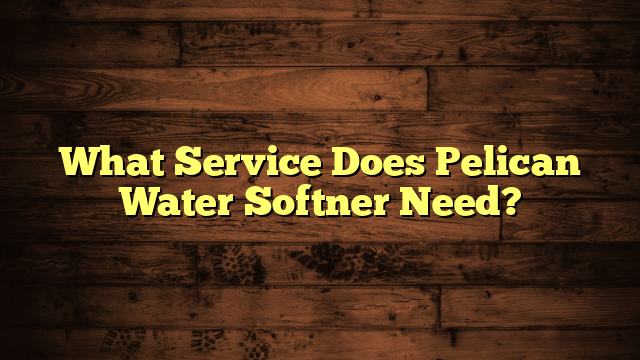Will Water Softner Salt Kill Vegetation?
You might be wondering if the salt from your water softener can harm your garden or landscaping. While it seems convenient to use softened water for irrigation, the sodium levels could create serious issues for your plants. As sodium accumulates in the soil, it can affect drainage and microbial activity, leading to visible stress in your vegetation. So, how do you determine if your plants are at risk, and what steps can you take to protect them? The answers might surprise you.
Key Takeaways
- Water softener salt can harm vegetation by increasing sodium levels, leading to toxicity and poor plant growth.
- Excess sodium disrupts soil structure, reducing drainage and affecting nutrient availability for plants.
- Different plant species have varying tolerances to salt, making careful selection important for gardens.
- Regular monitoring of soil salinity and proper drainage can help mitigate salt's negative effects on plants.
- Using alternatives like potassium chloride or natural descalers can promote healthier soil and vegetation.
Understanding Water Softener Salt
When you think about water softener salt, it's important to understand its role in the water softening process. This salt is essential for removing hard minerals like calcium and magnesium from your water, which can lead to scale buildup in your plumbing and appliances.
You'll find various water softener types, including ion exchange systems, which rely heavily on salt to function effectively.
Typically, the salt used in these systems comes in three forms: rock salt, solar salt, and evaporated salt, each varying in purity and effectiveness.
While salt is the standard choice, some homeowners explore salt alternatives like potassium chloride. These alternatives can soften water just as effectively but may come with different implications for your health and plants.
Understanding the type of salt in use and its potential impact on your vegetation is essential. If you're considering switching to a salt alternative, weigh the benefits and drawbacks carefully.
Learning about water softener salt helps you make informed decisions that can ultimately protect both your plumbing and your garden.
How Water Softening Works
Water softening primarily relies on a process called ion exchange.
In this process, the hard minerals like calcium are replaced with sodium ions, which helps reduce scale buildup in your plumbing.
Understanding this difference in sodium versus calcium levels is essential for maintaining healthy vegetation.
Ion Exchange Process
The ion exchange process transforms hard water into soft water by swapping out undesirable minerals like calcium and magnesium for sodium ions.
When you use a water softener, it contains a resin bed that holds these tiny beads, which are negatively charged. As hard water flows through this resin, the positively charged calcium and magnesium ions cling to the beads, while sodium ions are released into the water.
This process greatly improves water quality by reducing scale buildup in pipes and appliances, leading to longer-lasting fixtures and better efficiency.
You may notice that your soaps and detergents work more effectively with softened water, as it creates a lather that rinses away easily.
After the resin beads become saturated with calcium and magnesium, they need to be regenerated. This is done by flushing the beads with a saltwater solution, restoring their sodium content.
The ion exchange process is essential for maintaining high water quality in your home, making it more enjoyable for daily use.
Understanding how this process works can help you appreciate the benefits of using a water softener and make informed decisions about your water treatment options.
Sodium vs. Calcium Levels
Sodium and calcium levels play an essential role in how effective water softening works. When you use a water softener, it replaces hard minerals like calcium and magnesium with sodium through a process called ion exchange. This shift reduces scale buildup in your pipes and appliances, enhancing their efficiency.
However, the increase in sodium levels can lead to sodium toxicity in plants if the softened water is used for irrigation.
Calcium benefits your garden by promoting healthy plant growth and aiding nutrient absorption. When you remove calcium from the water, you might be depriving your plants of these crucial nutrients. While sodium is essential in small amounts, excessive levels can harm vegetation, leading to poor growth or even plant death.
If you're concerned about the effects of softened water on your garden, consider using a separate irrigation system that utilizes hard water, or install a bypass valve on your water softener.
This way, you can enjoy the advantages of softened water in your home while ensuring your plants receive the calcium benefits they need to thrive. Balancing sodium and calcium levels is crucial for both your household and your garden's health.
Potential Effects on Soil
When you use water softener salt, it can greatly impact soil health over time. The sodium from the salt can accumulate in the soil, affecting its structure and function. This accumulation can lead to a variety of issues that may hinder vegetation resilience, making it essential to understand these potential effects.
Here are some key points to reflect on regarding soil health:
- Sodium Accumulation: Excess sodium can displace essential nutrients, leading to nutrient imbalances.
- Soil Structure: High sodium levels can deteriorate soil structure, causing compaction and reducing aeration.
- Water Infiltration: Sodium can hinder water infiltration, leading to poor drainage and increased runoff.
- Microbial Activity: Excessive sodium can negatively impact beneficial microbes, reducing soil fertility and health.
Impact on Plant Health
When you use water softener salt, it can lead to salt toxicity levels that harm your plants.
The increased salt concentration alters soil composition, affecting nutrient availability and water retention.
Understanding these changes is essential for maintaining healthy vegetation in your garden.
Salt Toxicity Levels
Understanding salt toxicity levels is essential for maintaining healthy vegetation in areas where water softeners are used. Salt accumulation in the soil can lead to significant issues for plant health, especially when it comes to vegetation sensitivity.
Different plants have varying tolerances to salt, and exposure to high levels can result in stunted growth or even death.
To help you assess the potential impact of salt on your plants, consider the following factors:
- Plant Type: Some species are more tolerant to salt than others, so choose wisely based on your environment.
- Soil Drainage: Good drainage can help reduce salt buildup, while poor drainage can exacerbate toxicity.
- Watering Practices: Regularly flushing the soil with fresh water can help mitigate salt accumulation.
- Location: Plants in low-lying areas or near driveways may be more prone to salt exposure.
Soil Composition Changes
Salt from water softeners can considerably alter soil composition, which directly impacts plant health. When salt accumulates in your soil, it raises soil salinity, leading to poor nutrient availability. Plants struggle to absorb essential nutrients, resulting in stunted growth and diminished vigor.
Here's a brief overview of how increased soil salinity affects plant health:
| Effect on Soil | Impact on Plants | Long-term Consequences |
|---|---|---|
| Reduced Nutrient Availability | Weak root systems | Increased susceptibility to diseases |
| High Soil Salinity | Leaf burn or wilting | Lower yields and quality of produce |
| Soil Structure Degradation | Poor water drainage | Erosion and loss of fertile land |
| Toxicity Build-Up | Yellowing leaves | Decreased biodiversity in gardens |
As you can see, the consequences of using softener salt extend far beyond immediate vegetation damage. Over time, these changes can lead to significant harm to your garden or landscape. By monitoring salinity levels and considering alternative solutions, you can help maintain a healthy environment for your plants.
Recommended Salt Levels
Maintaining the right salt levels in your water softener is essential for both efficiency and environmental health.
If you want to protect your vegetation, you need to guarantee that you're using the recommended salt levels. Too much salt can lead to issues not only for your plants but also for the overall ecosystem.
To help you manage your salt usage effectively, consider the following tips:
- Know your water hardness: Test your water to determine how much salt is actually needed for softening.
- Follow manufacturer guidelines: Always adhere to the recommended salt levels specified in your water softener's manual.
- Monitor your system: Regularly check the salt levels in your brine tank to guarantee appropriate usage.
- Use high-quality salt: Choose a salt type designed for water softeners to maximize efficiency and minimize environmental impact.
Signs of Salt Damage
You might notice your plants showing distress if they're exposed to excessive salt from your water softener. This distress manifests as vegetation stress, which can greatly affect their health. One common sign is leaf discoloration. You may see yellowing leaves or even browning tips, indicating that your plants are struggling to cope with the salt levels.
Here's a quick reference table to help identify the signs of salt damage:
| Sign of Damage | Description |
|---|---|
| Leaf Discoloration | Yellowing or browning of leaf edges |
| Wilting or Drooping | Leaves and stems lose turgor pressure |
| Stunted Growth | Reduced height and size of plants |
These signs are vital indicators that your vegetation is under stress. If you observe any of these symptoms, it is important to assess the salt levels around your plants. Ignoring these signs can lead to more severe damage or even plant death. Being proactive will help you manage the health of your garden effectively and guarantee your plants thrive despite potential salt exposure.
Mitigation Strategies
Implementing effective mitigation strategies can considerably reduce the impact of water softener salt on your vegetation.
By adopting proper salt management techniques, you can help guarantee the health and recovery of your plants. Here are some practical steps you can take:
- Choose the right location: Position your water softener away from garden beds and vegetation to minimize salt runoff.
- Use salt-free alternatives: Consider non-sodium-based water softening methods that won't negatively affect your soil and plants.
- Monitor soil salinity: Regularly test your soil to detect salt levels, allowing you to address any issues before they harm your plants.
- Enhance drainage: Improve drainage in your yard to prevent salt accumulation, encouraging vegetation recovery and overall soil health.
Alternatives to Salt Softeners
Exploring alternatives to salt softeners can lead to healthier soil and vibrant vegetation. If you're considering a switch, natural softeners are a great option. These products often use materials like potassium chloride, which can soften water without the harmful effects of traditional salt.
By opting for natural softeners, you can protect your garden and guarantee your plants thrive.
Another eco-friendly alternative is using a descaler. These devices alter the properties of hard water, preventing mineral buildup without adding sodium or potassium.
This method can keep your plumbing and appliances running smoothly while safeguarding your outdoor spaces.
You might also explore the benefits of rainwater harvesting. Collecting rainwater for irrigation not only reduces your water bill but also provides your plants with soft, chemical-free water.
This practice promotes healthy growth and minimizes your environmental impact.
Lastly, consider using organic compost as a soil conditioner. It can help improve soil structure and nutrient content, which naturally addresses hard water issues.
Frequently Asked Questions
Can Water Softener Salt Affect Nearby Water Sources?
Yes, water softener salt can affect nearby water sources. It may alter water quality and contribute to environmental impact, especially if salt concentrations rise, potentially harming aquatic life and disrupting local ecosystems. Monitor your usage carefully.
Is All Water Softener Salt Harmful to Plants?
Not all water softener salt is harmful to plants, but certain types can cause salt toxicity. You should consider the salt concentration and monitor your plants' health to guarantee they thrive without negative effects.
How Long Does Salt Remain in the Soil?
Imagine a barren landscape, reminiscent of a salt flat. Salt accumulation in your soil can linger for months to years, negatively impacting soil health and making it challenging for plants to thrive. Keep testing for the best results.
Can I Use Water Softener Discharge for Irrigation?
Using water softener discharge for irrigation isn't recommended. The water quality may harm plants due to high salt content. Instead, consider alternative irrigation techniques that guarantee healthier soil and vegetation without compromising their growth.
What Types of Plants Are Most Sensitive to Salt?
You might be surprised to learn that many salt-sensitive plants, like azaleas and rhododendrons, struggle with high salt levels. Understanding their salt tolerance levels will help you choose the right plants for your garden.
Conclusion
In the battle for healthy vegetation, water softener salt can be a stealthy foe. It's essential to recognize how high sodium levels can wreak havoc on your soil and plants, leading to a cascade of problems like leaf discoloration and stunted growth. By managing salt levels and exploring alternatives, you can safeguard your garden's vigor. Remember, a healthy landscape isn't just about what you add, but also what you wisely choose to leave out.







